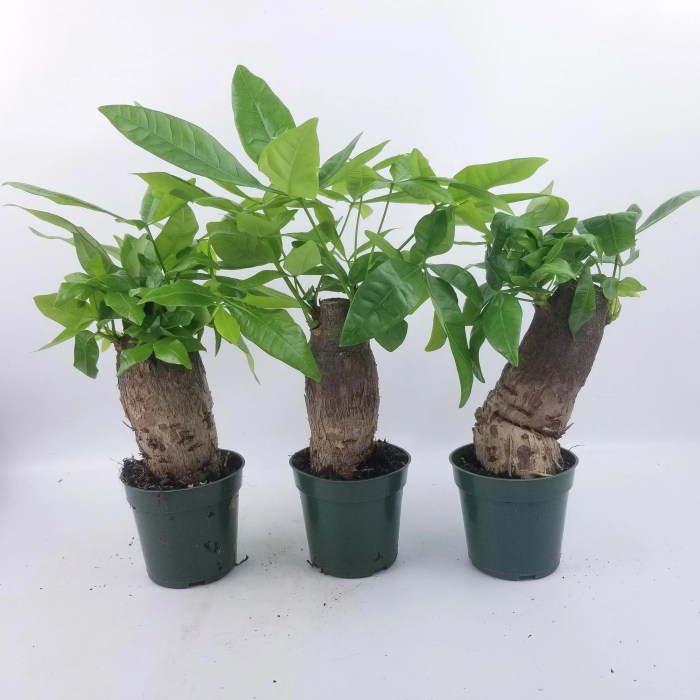Defining “Money Tree” Plants

Is a money tree a tropical plant – Yo, let’s get real about these money trees, bruv. They ain’t actually gonna magically print you some cash, but they’re pretty fly plants, alright? We’re talking aboutPachira aquatica*, a proper showstopper that’s become a right popular houseplant. It’s got this whole vibe going on, and it’s surprisingly low-maintenance for something that looks so lush.
Pachira aquatica: The Lowdown
Right, so
Pachira aquatica*, that’s the scientific name for the money tree. It’s a member of the mallow family (Malvaceae), and it’s native to the swamps and wetlands of Central and South America. Picture this
The money tree, Pachira aquatica, thrives in tropical and subtropical climates, mirroring the environmental needs of many other tropical plants. Understanding the cultivation requirements of tropical species can provide valuable insight into horticultural practices; for example, the techniques described in this guide on how to plant pecan tree highlight the importance of proper soil drainage and sunlight exposure, factors equally crucial for successful money tree cultivation.
Therefore, the optimal growing conditions for a money tree align with its tropical origins.
a tree with palmate leaves – that’s like a hand with fingers, get it? – and a thick, braided trunk that’s often deliberately styled for that iconic look. They can grow pretty tall, up to 60 feet in the wild, but indoors they stay much more manageable. The leaves are a lovely, deep green, and sometimes you even get these creamy-white flowers, though that’s less common indoors.
The whole thing’s got a tropical feel, which is no surprise given its origins.
Varieties and Cultivars of Pachira aquatica
There ain’t a massive amount of officially named varieties, but there’s definitely some variation out there. You’ll see differences in leaf size and colour, and sometimes even the branching patterns. Nurseries often create their own cultivars, which are basically plants that have been selectively bred for specific traits. These can have slightly different leaf shapes or growth habits.
Think of it like different strains of weed – same basic plant, but subtle variations. It’s all down to the growers and how they propagate them.
Native Habitat and Geographical Distribution
These beauties are originally from Central and South America, specifically the tropical regions of Mexico, Central America, and northern South America. They love the humid, swampy areas, the kind of place you’d find near rivers and lakes. They’re used to a lot of moisture and warm temperatures, which is something to bear in mind if you’re trying to keep one happy indoors.
Physical Characteristics of Different Money Tree Varieties
| Variety | Leaf Shape | Trunk Appearance | Height (Indoor) |
|---|---|---|---|
| Standard Pachira aquatica | Palmate, 5-7 leaflets | Thick, braided or single | 3-6 feet |
| ‘Variegata’ | Palmate, 5-7 leaflets, variegated green and yellow | Similar to standard, sometimes less pronounced braiding | 3-6 feet |
| Compact Cultivars | Palmate, smaller leaflets | Thinner trunk, less braiding | 1-3 feet |
| ‘Mini Money Tree’ | Palmate, very small leaflets | Slender trunk | 1-2 feet |
Tropical Plant Characteristics

Yo, let’s get real about what makes a plant a proper tropical dude. These aren’t your average garden-variety blooms; they’re the kings and queens of the jungle, adapted to some seriously intense conditions. Think lush rainforests, steamy swamps – the whole shebang.Tropical plants are built different, bruv. They’re all about thriving in consistently warm, humid, and wet environments.
Forget those frosty winters; these plants are all sunshine and showers, all year round. Their adaptations are wild, reflecting millions of years of evolution in these specific conditions. Think of it like this: they’re the ultimate survivors in a high-stakes climate game.
Climate Preferences of Tropical Plants
Tropical plants dig a certain vibe: consistently high temperatures, usually between 20-30°C (68-86°F), with little to no frost. High humidity is another key factor; they’re used to that damp, muggy air. Rainfall is abundant, often spread evenly throughout the year, although some regions might experience distinct wet and dry seasons. Think of the Amazon – a constant downpour is the norm, not the exception.
This consistent moisture is crucial for their growth and survival.
Adaptations of Tropical Plants
These plants ain’t messing about. They’ve developed some serious survival skills to cope with the intense conditions. Many have broad leaves to maximise sunlight capture in the dense rainforest canopy. Others have developed drip tips on their leaves – a pointed tip that allows water to run off quickly, preventing fungal growth in the high humidity. Some even have aerial roots, which absorb moisture and nutrients directly from the air, a lifesaver in the humid jungle floor.
Vines climb high to reach the sunlight, showcasing their ability to adapt and thrive. Think of the massive strangler figs, slowly but surely engulfing their host trees.
Common Tropical Plant Families and Key Features, Is a money tree a tropical plant
Right, let’s break down some of the major players in the tropical plant game. These families showcase the amazing diversity of adaptation found in these environments.
Understanding these families gives a broader picture of the incredible biodiversity within tropical ecosystems. Their unique features are a testament to their successful adaptation to specific environmental niches.
- Araceae (Aroids): Think monsteras, peace lilies, and philodendrons. Known for their striking foliage, often with large, heart-shaped or deeply lobed leaves. Many are epiphytes, growing on other plants.
- Bromeliaceae (Bromeliads): These guys include pineapples and many ornamental plants. They often have tough, leathery leaves that form a rosette, collecting water and nutrients. Many are epiphytes.
- Orchidaceae (Orchids): Seriously diverse family, famous for their stunning flowers. Many are epiphytes, clinging to branches high in the canopy. Their flowers are highly specialized for attracting specific pollinators.
- Heliconiaceae (Heliconias): These plants boast brightly coloured bracts (modified leaves) that attract hummingbirds and other pollinators. They’re often found in humid, shaded areas.
- Arecaceae (Palms): Iconic tropical plants, with their characteristic fronds and often single, unbranched stems. They exhibit a wide range of sizes and forms, adapting to various tropical habitats.
FAQ Overview: Is A Money Tree A Tropical Plant
Can I grow a money tree outdoors in a temperate climate?
Only in frost-free areas. It needs consistently warm temperatures.
How often should I water my money tree?
Water when the top inch of soil is dry, avoiding overwatering which leads to root rot.
Why are the leaves on my money tree turning yellow?
Possible causes include overwatering, underwatering, or insufficient light. Check your watering habits and lighting conditions.
How do I propagate a money tree?
Propagation is easiest from stem cuttings. Use rooting hormone for best results.
